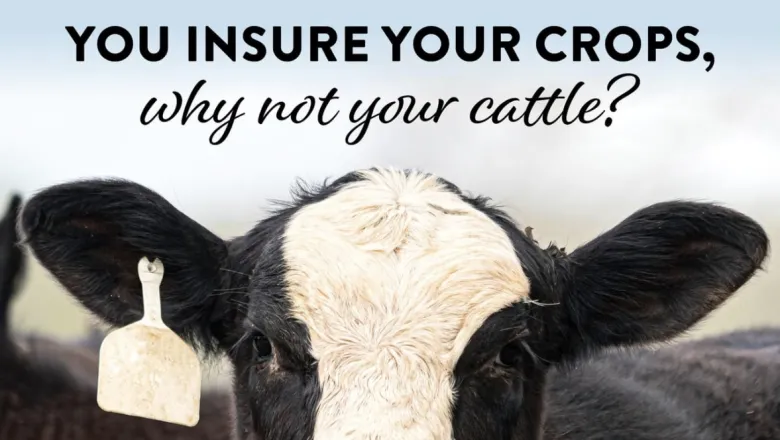Livestock Risk Protection for Cattle

Farm Management Resources
What is Livestock Risk Protection (LRP) and why do I need it?
With the never-ending fluctuation and unpredictability of the market, Livestock Risk Protection (LRP) is a tool all cattle producers should consider. The primary purpose of LRP is to protect livestock producers from declining market prices, allowing them to establish a floor price for their livestock, meaning if the actual market price falls below the coverage price, the producer receives an indemnity for the difference, while still benefiting from potential price increases.
The producer must determine when their cattle will be marketed, target weight and number of head they wish to insure. There are a variety of coverage level options ranging from 70 to 100 percent of the expected ending value.
How does LRP work?
LIVESTOCK RISK PROTECTION
Assume: Producer expects to market 1,000 head of 11cwt cattle and selects coverage of $66.24
| Coverage | 1000 head x 11cwt x $66.24 | $728,640 |
| Actual Ending Value | 1000 head x 11cwt x $65.21 | $717,310 |
| Loss Payment | Assume 100% Ownership | $11,330 |
*This is for demonstration purposes only. This scenario is not based on an actual claim and should not be compared to an actual claim. Chart originally produced by Rain and Hail LLC*
It is important to remember that your local selling price has no impact on the LRP policy. LRP coverage uses prices from the CME Group that are announced almost daily. As of 2020, LRP (Cattle) is now available in all states when the market is available.
LRP HAS TWO TYPES OF COVERAGE FOR CATTLE AVAILABLE:
- Feeder Cattle with ending weights under 600lbs or 600lbs-1000lbs, and
- Fed Cattle with ending weights between 1,000lbs-1,600lbs that will be marketed for slaughter near the end of the insurance period.
What is the difference between LRP and Livestock Insurance?
LRP does not cover death, disease or any other peril, whereas livestock insurance does. It is important that you keep open communication with your agent if something of this nature should arise. If your policy does trigger a loss, there will be documentation that the agent and insurance company will require you to fill out and turn in to show proof of ownership, and sale or retention within the appropriate sale window of 60 calendar days from the closing date of your specific coverage endorsement.
How to get LRP
You must buy an LRP through a crop insurance agent who has taken the extra training courses for livestock coverage. You can fill out an application at any time, however, coverage will not attach until you sign a specific coverage endorsement. Timing on this policy is everything. Once the market closes in the afternoon, you have until the following morning to get the paperwork signed with the agent to attach coverage to your cattle. Like other crop insurance policies, this policy is subsidized by the federal government as long as you meet all the required guidelines.
The good news is our crop insurance agents are certified and ready to help you sign up for livestock risk protection through Farm Credit Crop Insurance. Visit our crop insurance webpage at the following link to learn more: www.farmcreditofvirginias.com/services/crop-insurance
Learn more about Crop Insurance
Article written by and made available in partnership with Horizon Farm Credit